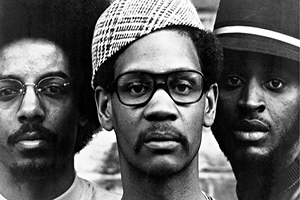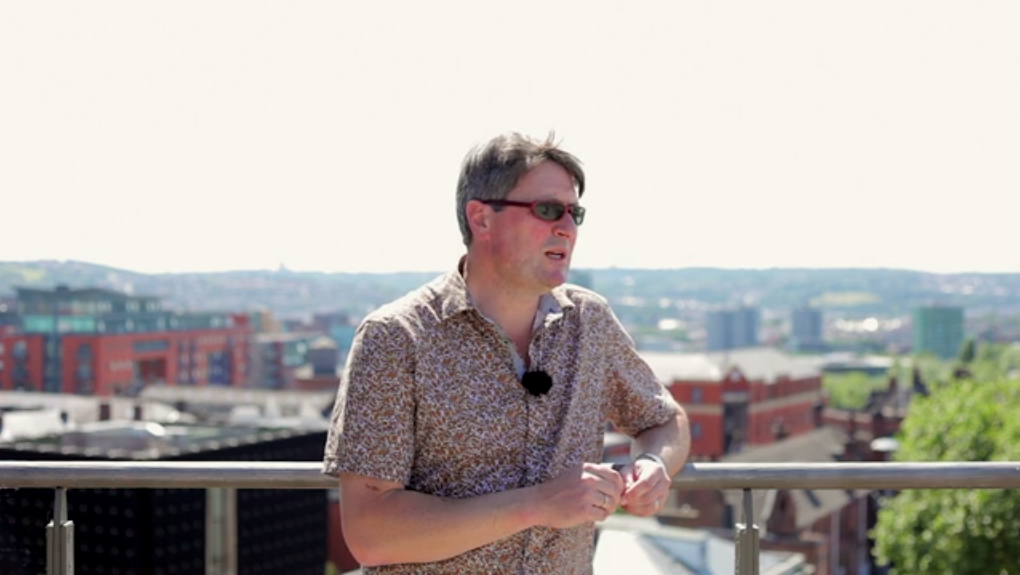
There is a chance that some may question the authenticity of a documentary such as Hustler’s Convention, a film that explores the story of the eponymous, landmark, American hip-hop album, and the people, places and attitudes responsible for its conception. The possible challenge to its legitimacy comes in the form of the director of the piece not being Black-American; there will no doubt be detractors of this film who insist that it is a form of cultural appropriation for a white man, from Manchester, England, to explore the emergence of such an important a piece of black cultural history. The film does, however, manage to be an eloquent articulation of difficult ideas concerning race, class and Black-American art that director Mike Todd handles deftly.
Hustler’s Convention, the album, is as essential in the context of rap and hip-hop as Nevermind is to grunge music, or The Velvet Underground & Nico is to the stranger side of pop, but remains largely unacknowledged and criminally unknown 40 long years after its release. Throughout the film, the diverse cast of talking heads extol the record’s brilliance and vision, but criticise and lament its omission from the annals of the genre. Hustler’s Convention, the film, charts the influence and trajectory of the album and its creator Lightnin’ Rod / Jalal Mansur Nuriddin over the decades that followed, and the albums impact on how the Black population of America expressed their feelings and ideas, through music and other mediums. The central and most consistent virtue of the film is the manner in which it converses with its audience, a mix of analysis and admiration that deconstructs the dramatic story of the album, but refuses to water down the ideas and complex philosophy of the record, using them instead as a jumping off point to explore the development of black art, during and after the civil rights movement.

It is refreshing to come across a contemporary documentary that does not underestimate the intellectual capacity of its audience, an emerging trend in the medium being to explain and clarify every intricate theory and idea that emerges from the discussion, so as not to lose the interest of the audience in the stream of information. Hustler’s Convention finds a balance between independent comprehension and spoon fed learning, one that does not patronise the viewer or feel the need to break down the more esoteric ideas involved the concepts of repression or 20th century race relations. Instead, Todd allows the images and the interviewees to speak for themselves, creating a collage of differing ideas and threads of thought that combine to paint a detailed portrait of Black America, the concept of expression, and the incredible value of art to those who are denied a voice.
The chronological structure of the film traces the career arcs of Nuriddin and The Last Poets, the influential, politically charged performance collective that emerged at the peak of the civil rights movement. The first half of the film inquires into the origins of hip hop as a genre, and the Poets’ contribution to the pantheon of black culture, before transitioning in the second half to explore the legacy of Hustler’s Convention as a piece of art, culminating in a present day performance to a generation of new fans. Through this act of reintroducing the album into the contemporary discussion of race and black history, the film connects its two disparate paths of analysis to address the necessities and pitfalls of recognition and fuse the more focused exploration of the record itself with the wider investigation into Black American culture and history.
In terms of form and style, the documentary sticks to a familiar format, combining interviews and guided discussions with archival footage and an electric soundtrack.

However, Hustler’s Convention’s most prominent stylistic achievement is the recurring animated rendition of the record itself, a surreal and vivid journey into the seedy underworld of pimps and drug dealers. The animation is sketchy enough to retain some of the DIY aesthetic of the record, but deliberately dark and brooding so as to not trivialise the words of Nuriddin and relegate the overall message to whimsical or eccentric. This treatment of the material could be said to spill over into the rest of the film, with great care taken not to tarnish its legacy with overwrought, sentimental annotations. All in all this was a mature and sophisticated discussion of complex ideas in a consistently casual and balanced manner with a brilliantly compiled soundtrack which contributes interesting and fresh perspectives to the ongoing conversation regarding black music, culture and art.
Hustlers Convention – Official Trailer from Riverhorse on Vimeo.
Words: Kristofer Thomas.



